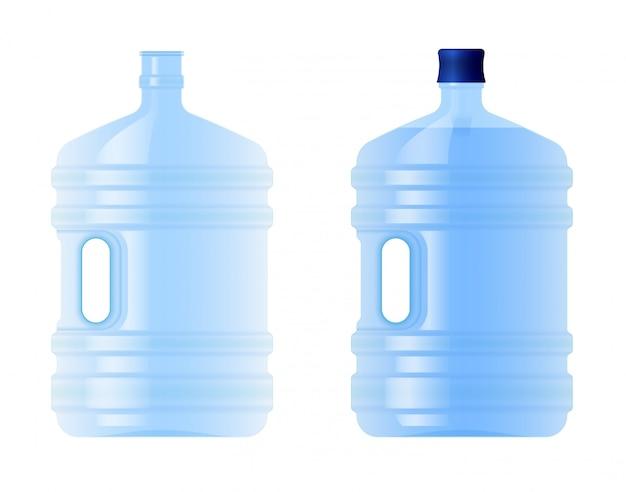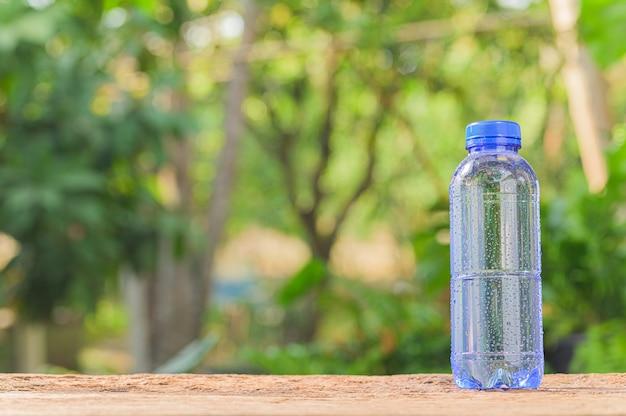When it comes to choosing the right plastic for drinking water containers, safety is the top priority. In today’s world, where sustainability and eco-friendliness are gaining importance, it’s crucial to understand the safety aspects of different plastics. ABS plastic, known for its durability and versatility, is a commonly used material. But is it safe for drinking water?
ABS (Acrylonitrile Butadiene Styrene) is a type of plastic that has various applications in industries such as automotive, electronics, and construction. However, its safety for holding water has been a topic of discussion. In this blog post, we will delve into the properties of ABS plastic, its advantages and disadvantages, and answer the question of whether it is safe for drinking water. So let’s explore the facts and dispel any doubts about ABS plastic and its suitability for your hydration needs.
Is ABS Plastic Safe for Drinking Water
When it comes to drinking water, safety should always be a top priority. We want to ensure that the vessels we use to hold or transport our water are free from harmful substances. ABS plastic, commonly found in various household items, is one material that often raises questions about its safety for drinking water. So, let’s dive right in and explore whether ABS plastic is truly safe for your aqua consumption!
Understanding ABS Plastic
ABS, short for acrylonitrile butadiene styrene, is a widely used thermoplastic polymer. It’s known for its durability, strength, and heat resistance, making it popular in manufacturing a wide range of products, including toys, electronic devices, and even water bottles. However, the safety of ABS plastic, especially in relation to drinking water, remains a matter of concern for many.
Material Composition: The Inside Scoop
To evaluate the safety of ABS plastic, it’s essential to understand its material composition. ABS plastic is made up of three primary chemicals: acrylonitrile, butadiene, and styrene. Acrylonitrile imparts heat resistance, while butadiene enhances impact resistance, and styrene provides rigidity and shine. In its original state, ABS plastic is considered stable and safe. But here’s the plot twist—sometimes, additives and colorants may be incorporated during the manufacturing process, which can influence its safety.
ABS Plastic and Your Health
Now, let’s address the million-dollar question: Is ABS plastic safe for drinking water? In general, ABS plastic is safe for use in contact with food and beverages, including water. It’s important to note that ABS plastic approved for food contact meets strict safety regulations and standards established by organizations such as the Food and Drug Administration (FDA). So, you can happily sip your water from an ABS plastic bottle without losing sleep over safety concerns.
When Worries Linger – The BPA Factor
While ABS plastic itself is considered safe, there is another substance that may raise concerns—the infamous BPA. Bisphenol A, widely known as BPA, is not used in the production of ABS plastic. However, it’s crucial to be aware that BPA can still be present as a component in certain additives or coatings used along with ABS plastic products. BPA has been associated with health risks, so if you have worries about its impact, look for ABS plastic products labeled as “BPA-free” to ease your mind.
Using ABS Plastic Responsibly
To ensure the utmost safety of ABS plastic products while using them for drinking water, it’s advisable to follow the manufacturer’s instructions diligently. Clean your ABS plastic water bottles regularly, and avoid exposing them to extreme temperatures, as it may lead to degradation and leaching of potentially harmful substances. Also, try not to reuse ABS plastic bottles for an extended period or expose them to harsh chemicals, as these actions can compromise their safety.
The Verdict: Aqua-Safe ABS
In conclusion, ABS plastic, when used in accordance with safety guidelines, is considered safe for drinking water. However, it’s crucial to remain cautious of potential additives or coatings that may contain BPA. The next time you grab that ABS plastic water bottle, take a sip with confidence, knowing that it’s designed to provide a safe and refreshing hydration experience. Cheers to worry-free hydration, my friends!
FAQ: Is ABS Plastic Safe for Drinking Water
What is the safest plastic to drink from
When it comes to drinking water, the safest plastic option is food-grade polyethylene. Not only is it BPA-free, but it also has a proven track record of being safe for use with potable water.
What are the disadvantages of ABS plastic
ABS plastic does have its drawbacks. It is not as heat-resistant as other plastics, which means it may warp or deform when exposed to high temperatures. Additionally, ABS has been known to release potentially harmful chemicals when heated, making it less ideal for applications involving hot liquids or foods.
Is ABS safe to print
ABS is generally safe to print with, as long as adequate ventilation is provided. When heated, ABS emits fumes that can be harmful if inhaled in large quantities. It is always recommended to use a well-ventilated area or consider using alternative materials if you have concerns about the fumes.
Why is ABS so bad
One of the main concerns with ABS plastic is its potential for releasing toxic fumes when heated. These fumes can irritate the respiratory system and may even have long-term health effects. It’s important to be cautious when using ABS in applications that involve high temperatures or where fumes may be released.
Why is ABS pipe illegal
ABS pipe is not necessarily illegal, but it has certain limitations that restrict its use in certain applications. For example, ABS pipe is not approved for use in potable water systems due to concerns about the release of harmful chemicals. In areas where plumbing codes are strict about using approved materials for drinking water, ABS may be deemed illegal.
What is ABS most commonly used for
ABS plastic is commonly used in a variety of applications, including automotive parts, toys, computer keyboards, and protective cases for electronic devices. Its strength, durability, and ability to be molded into complex shapes make it a popular choice in many industries.
What is the safest plastic
In terms of safety, food-grade polyethylene is considered one of the safest plastics. It is free from toxins, including BPA, and has been extensively tested for use with food and beverages. Look for products labeled as “BPA-free” and made from food-grade polyethylene when choosing safe plastic options.
Is ABS child safe
While ABS plastic is generally considered safe for everyday use, it is important to consider the age of the child and the specific application. Some studies suggest that ABS may release chemicals that could be harmful, particularly for young children. As a precaution, it’s always best to opt for safer alternatives, especially for items that come into direct contact with children, such as toys or utensils.
Is ASA better than ABS
ASA (acrylonitrile-styrene-acrylate) is a weather-resistant variant of ABS plastic. It offers enhanced UV stability and improved resistance to fading and yellowing over time. In terms of longevity and performance in outdoor applications, ASA may be a better choice than standard ABS.
What plastics should you avoid
To minimize potential health risks, it’s best to avoid plastics containing BPA (bisphenol A) and phthalates. These chemicals have been linked to various health issues and can leach into food or beverages. Look for products labeled as “BPA-free” and consider using alternatives such as glass or stainless steel.
Can you bury ABS pipe
No, ABS pipe should not be buried underground. While it is a durable material, it is not designed to withstand the constant soil movement and pressure that can occur. Instead, use materials specifically intended for underground applications, such as PVC or HDPE (high-density polyethylene) pipes.
Is ABS pipe safe for drinking water
No, ABS pipe is not safe for use in potable water systems. ABS can potentially release harmful chemicals into the water, making it unsuitable for drinking water applications. It’s important to use approved materials specifically designed for use with drinking water to ensure the safety of your water supply.
How can you tell if plastic is ABS
To identify ABS plastic, there are a few characteristics to look for. ABS is typically opaque (not transparent) and has a smooth, matte finish. It can be identified by its ivory or off-white color, although it can also be molded in different colors. Additionally, ABS has a distinct smell when heated, often described as a “sweet” or “burnt plastic” odor.
Is ABS plastic BPA-free
Yes, ABS plastic is generally considered free from BPA (bisphenol A). However, it is important to note that ABS can release other potentially harmful chemicals when heated or exposed to certain conditions. If you are concerned about the safety of ABS plastic, consider using plastics that are explicitly labeled as BPA-free.
Is HDPE plastic BPA-free
Yes, HDPE (high-density polyethylene) plastic is typically free from BPA. It is one of the safer plastic options, widely used in food packaging and containers. HDPE is known for its durability, resistance to chemicals, and low risk of leaching harmful substances into food or beverages.
Is ABS toxic when burned
When ABS plastic is burned, it can release toxic chemicals and fumes, including styrene and other potentially harmful substances. It is important to avoid burning ABS or any plastic material, as inhaling the fumes can be harmful to your health. When disposing of ABS waste, opt for appropriate recycling methods.
Is ABS safe to breathe
While ABS plastic itself is not considered toxic, it can emit fumes when heated or burned, which may be irritating to the respiratory system. It’s important to avoid prolonged exposure to these fumes and to use ABS in well-ventilated areas. If you have respiratory sensitivities or concerns, consider alternative materials.
Is ABS or PVC better
ABS and PVC (polyvinyl chloride) are both widely used plastics but differ in certain aspects. ABS is known for its impact resistance and strength, making it suitable for applications requiring rugged performance. On the other hand, PVC is more flexible and resistant to chemicals, making it a popular choice for plumbing and electrical applications. The choice between ABS and PVC depends on the specific requirements of the project.
Why is ABS pipe banned
ABS pipe is not universally banned, but its use may be restricted in certain jurisdictions. This restriction is primarily due to concerns about the release of potentially harmful chemicals into the water supply. Plumbing codes and regulations are in place to ensure the safety and quality of drinking water, which may include limitations on ABS pipe usage.
Is ABS plastic good or bad
ABS plastic has its advantages and disadvantages, making it suitable for some applications but not others. It offers excellent impact resistance, durability, and the ability to be molded into complex shapes. However, ABS can release fumes when heated, and it may not be suitable for high-temperature or food-related applications. Consider the specific requirements and potential risks before using ABS plastic.
Are ABS poisonous
ABS plastic itself is not considered poisonous. However, when ABS is heated or burned, it can release toxic fumes, including styrene, which may be harmful if inhaled in significant quantities. It’s important to avoid prolonged exposure to these fumes and to use ABS in well-ventilated areas.
What are the disadvantages of polycarbonate
Polycarbonate, while a strong and durable plastic, has its share of drawbacks. One major concern is its potential to release BPA, a chemical linked to various health issues, when heated or exposed to acidic substances. Polycarbonate is also more prone to scratching than some other plastics and may not be suitable for certain applications where optical clarity is essential.

